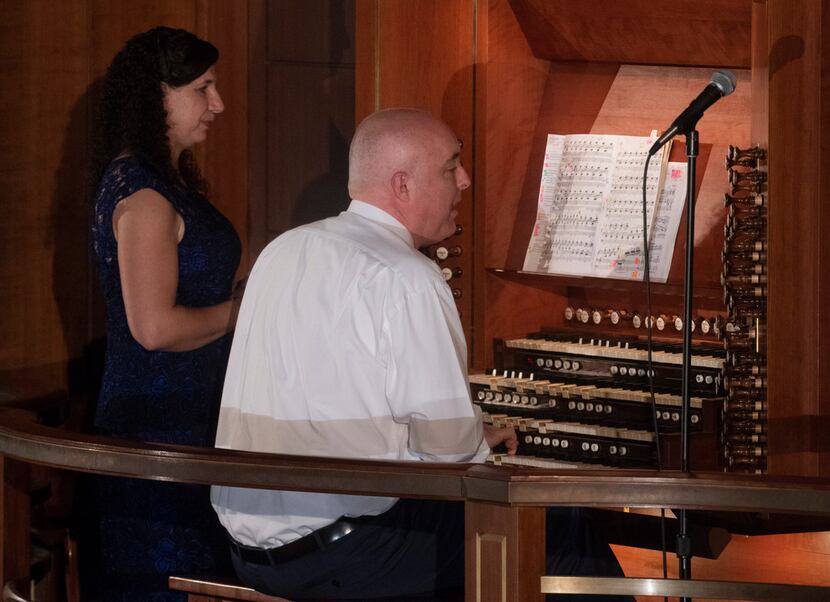With his ebullient manner and plummy Australian accent, the organist Thomas Heywood reminds me of the late Australian naturalist Steve Irwin of the Crocodile Hunter TV series. Heywood was certainly the most enthusiastic host imaginable for his own recital Sunday afternoon at the Meyerson Symphony Center, opening this season's "Opus 100" solo organ series sponsored by the Dallas Symphony Orchestra.
A true virtuoso of the organ, Heywood has made his name particularly for performing organ arrangements of orchestral and other instrumental works. In days before every modest town had its own symphony orchestra, such arrangements were staples in organ recitals and church use. They fell into disrepute during the baroque music revival of the 1960s and '70s, but in more recent years, more and more organists again play transcriptions. Some organ builders are now reviving more imitative orchestral stops and effects.
Given the right kind of instrument, in more or less "orchestral" style, some organists try to replicate colors of the original instrumentations. Heywood, by contrast, works to make arrangements sound as idiomatic as possible for the organ. That was just the approach for the Meyerson's heroic C.B. Fisk organ, a relatively classical instrument filled out with some big reeds at top and bottom.
The program included arrangements of some little-known pieces: an overture from one of Handel's Chandos Anthems, a Bridal March and Finale from English composer Hubert Parry's incidental music for Aristophanes' play The Birds, a march composed by Tchaikovsky for the coronation of Czar Alexander III. More familiar fare included Debussy's Clair de lune and Sir William Walton's Orb and Scepter coronation march.
There was lots of jolly music, and Heywood tossed it off with irresistible rhythmic verve, his wife helping a lot with the manifold registration changes. We heard powerful sonic assaults, including hot-coals flourishes from the big English tuba stop and tectonic thunder from the 32' Tuba Profunda. There were also more delicate effects of flutes, strings and the tremulous Vox humana stop.

There were also some pieces actually composed for organ, although Heywood treated the Bach Pièce d'orgue (formerly known as the G major Fantasia) in a rather orchestral style, with crescendos and decrescendos.
A D major Grand offertoire by Edouard Batiste, including what sounds like carousel music and a light-opera aria, was entertaining evidence of the depths to which French church music sank in the mid-19th century. (This would have been played during preparation of the elements at Mass!) The Sonata No. 5 by Alexandre Guilmant, a hugely influential French organist of the next generation, represented a new Teutonic respectability — but not without flair and a bit of sentimentality. Amid otherwise dazzling performances, Heywood sometimes rushed too much in the extrovert movements.
Formerly classical music critic of The Dallas Morning News, Scott Cantrell continues covering the beat as a freelance writer. Classical music coverage at The News is supported in part by a grant from the Rubin Institute for Music Criticism, the San Francisco Conservatory of Music and the Ann and Gordon Getty Foundation. The News makes all editorial decisions.

